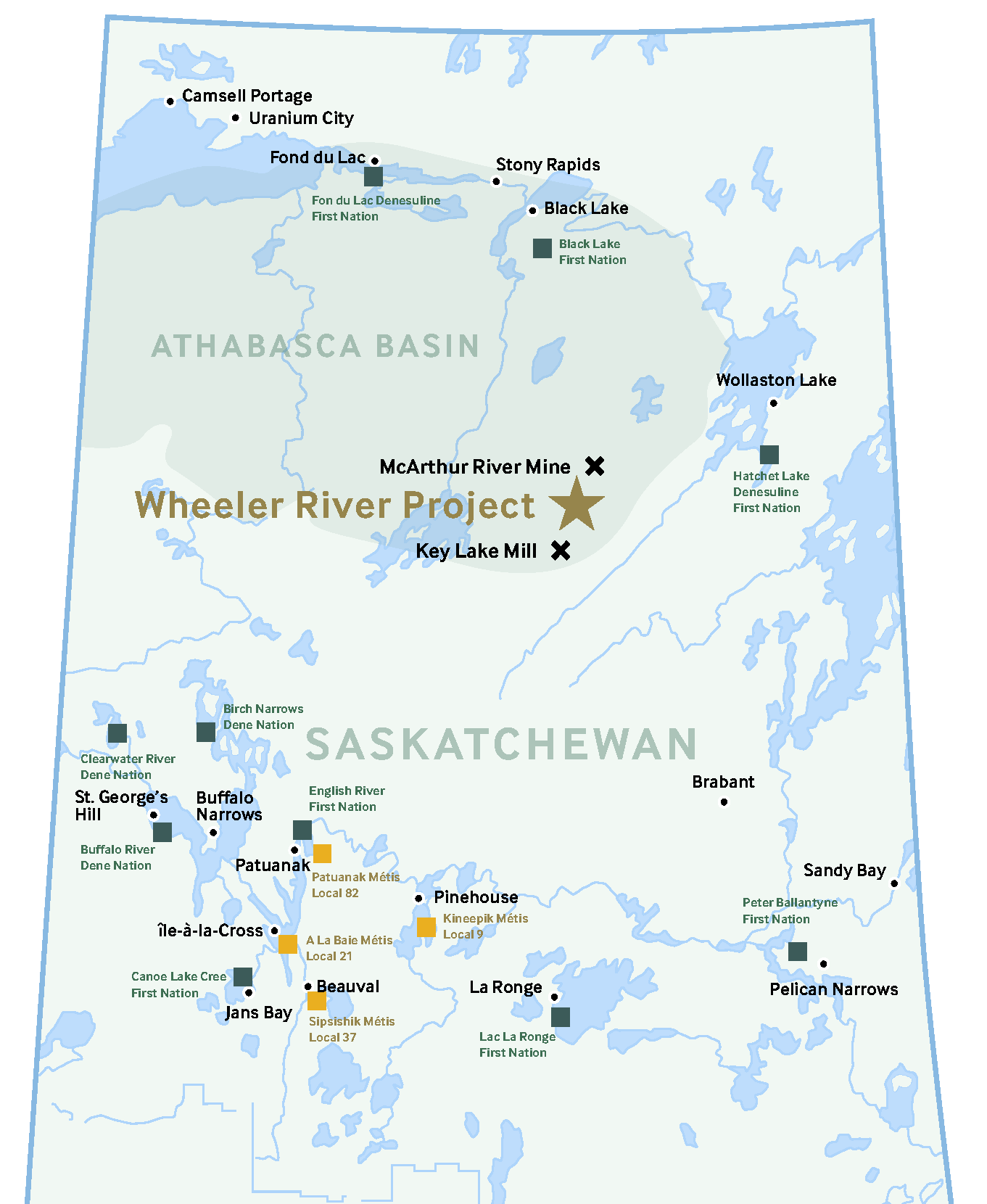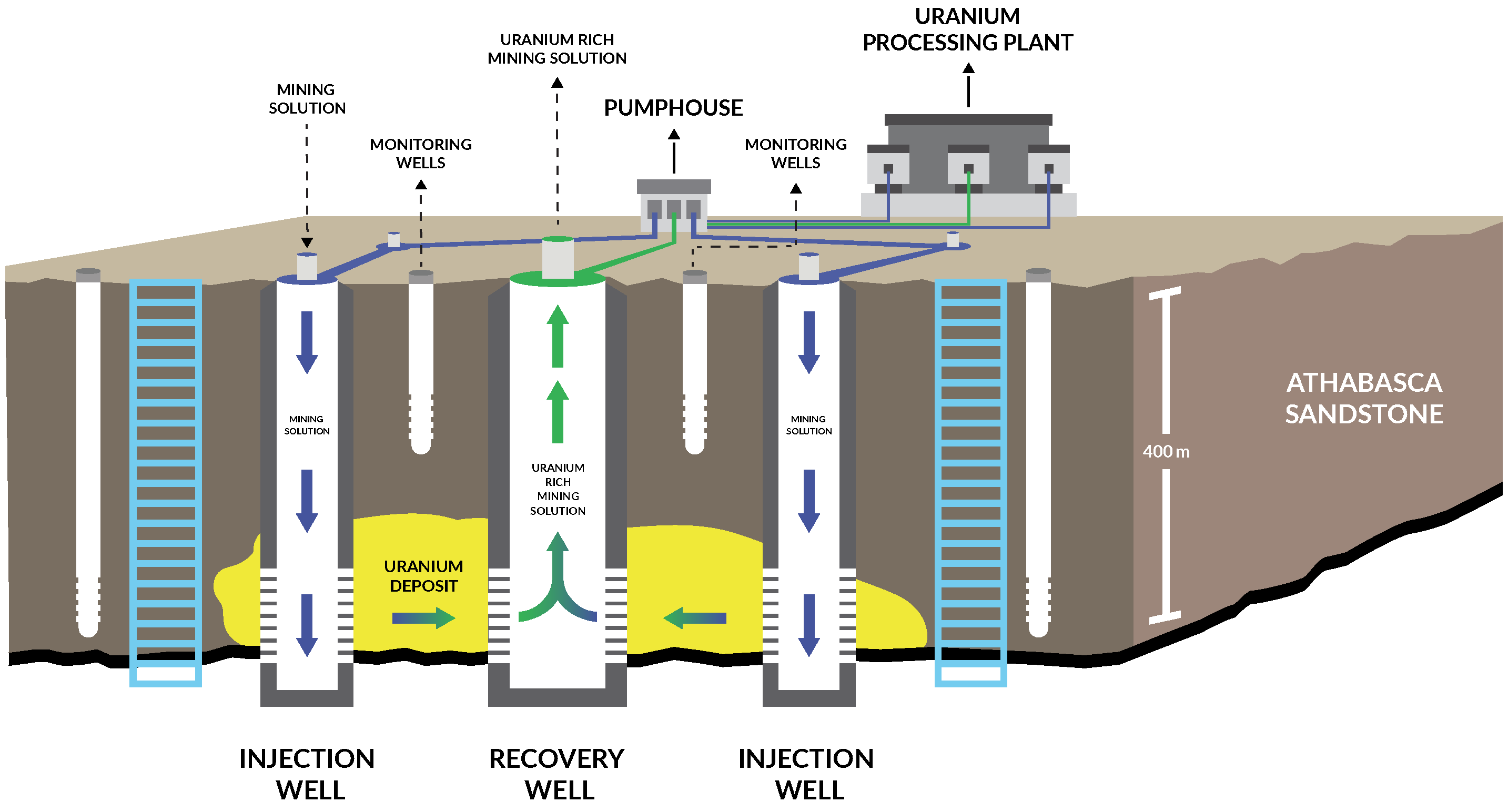
See how we’re doing things differently
▼
The Wheeler
River Project.
The Wheeler River Project is situated in the eastern portion of the Athabasca Basin region in northern Saskatchewan, and it is the site of a proposed In Situ Recovery (ISR) uranium mining project. It is located 35 km north-northeast of the Key Lake mill and 35 km southwest of the McArther River uranium mine, within the traditional territory of several Indigenous peoples. Denison Mines has an effective 95% ownership of the project, and as the project operator we are working closely with Indigenous groups and local communities to establish a positive legacy through the development of the project.

ISR MINING
Learn More
Community
Learn More
Environment
Learn More
IN SITU RECOVERY MINING
It’s not business
as usual, it’s
business UNusual.
In situ recovery (ISR) mining is widely used outside of Canada, but the Wheeler River Project will mark the first time this method is used at a Canadian uranium mining site. With no conventional tailings, no large waste rock piles, and no open pits or major earthworks, ISR mining is progressive, economical, and environmentally responsible.
Once the active mining is done, the mining zone will be restored to environmentally acceptable levels standards before the containment area around the mining zone will be removed, which is the freeze wall.


COMMUNITY
We listen to communities and share benefits, even at the early stages of exploration.

Denison is proud to be a leader of exploration and development mining companies in relation to reconciliation. In 2021, Denison’s Board endorsed its Indigenous Peoples Policy; a first for companies operating in the areas where we operate. This policy sets out our commitment on action in relation to reconciliation in five key areas: Engagement, Empowerment, Environment, Employment, and Education.
Every community has their own unique needs in relation to how development activities occur in the region. We work hard to listen to their concerns, and we value their knowledge and insight. Our team members visit communities often to deepen our understanding of who they are and what matters to them.
300
JOBS
2 YEARS OF
CONSTRUCTION
100
JOBS
10 YEARS OF
OPERATION
Economic opportunities.
Denison Mines is invested in hiring local talent and supporting local Indigenous-owned businesses whenever possible. The project will need to fill up to 300 jobs during 2 years of construction and approximately 100 jobs during 10 years of operation in a safe, above-ground work environment. Many of the required roles will be similar to roles at existing uranium operations, and ISR-specific training will be provided when necessary.
Meet the team.

Kevin Himbeault
Vice-President, Operations

Carolanne Inglis-McQuay
Director, Corporate Social Responsibility

Janna Switzer
Vice-President, Environment, Sustainability, & Regulatory

Xavier Ludac
Director, Project Execution

Chad Sorba
Vice-President, Technical Services & Project Evaluation

Dustin Heisler
Manager, Health and Safety
Less self-interest. More community interest.
We continue to engage with interested parties, including Indigenous and non-Indigenous communities potentially affected by the Wheeler River Project. Through ongoing outreach sessions, we have learned a lot about the environmental and community priorities that will make the project safe and successful for all.
ENVIRONMENT
No conventional tailings.
No waste rock piles.
No underground workings.
Understanding the potential effects the Wheeler River Project will have on the environment is a priority for Denison Mines. The ISR mining method leaves no conventional tailings, waste rock piles, or underground workings. This will make it much easier to reclaim the site area when the operation is finished. The ISR method reduces the footprint and intensity of mining to maintain natural habitats—and that’s good news for all our partners. The lifespan of the Wheeler River project will be short compared to other operations in the area, meaning that closure and cleanup of the site is planned to be completed within a generation.


In the last several years, we have made significant progress in the Environmental Assessment process. In May 2019 the Wheeler River Project Description was accepted and made available to the public. In October 2022 we submitted a draft Environmental Impact Statement to the Saskatchewan Ministry of Environment and the Canadian Nuclear Safety Commission. The environmental assessment process includes a significant public commenting process that ensures transparency about the activities Denison is proposing, and how Denison plans to undertake the work.


